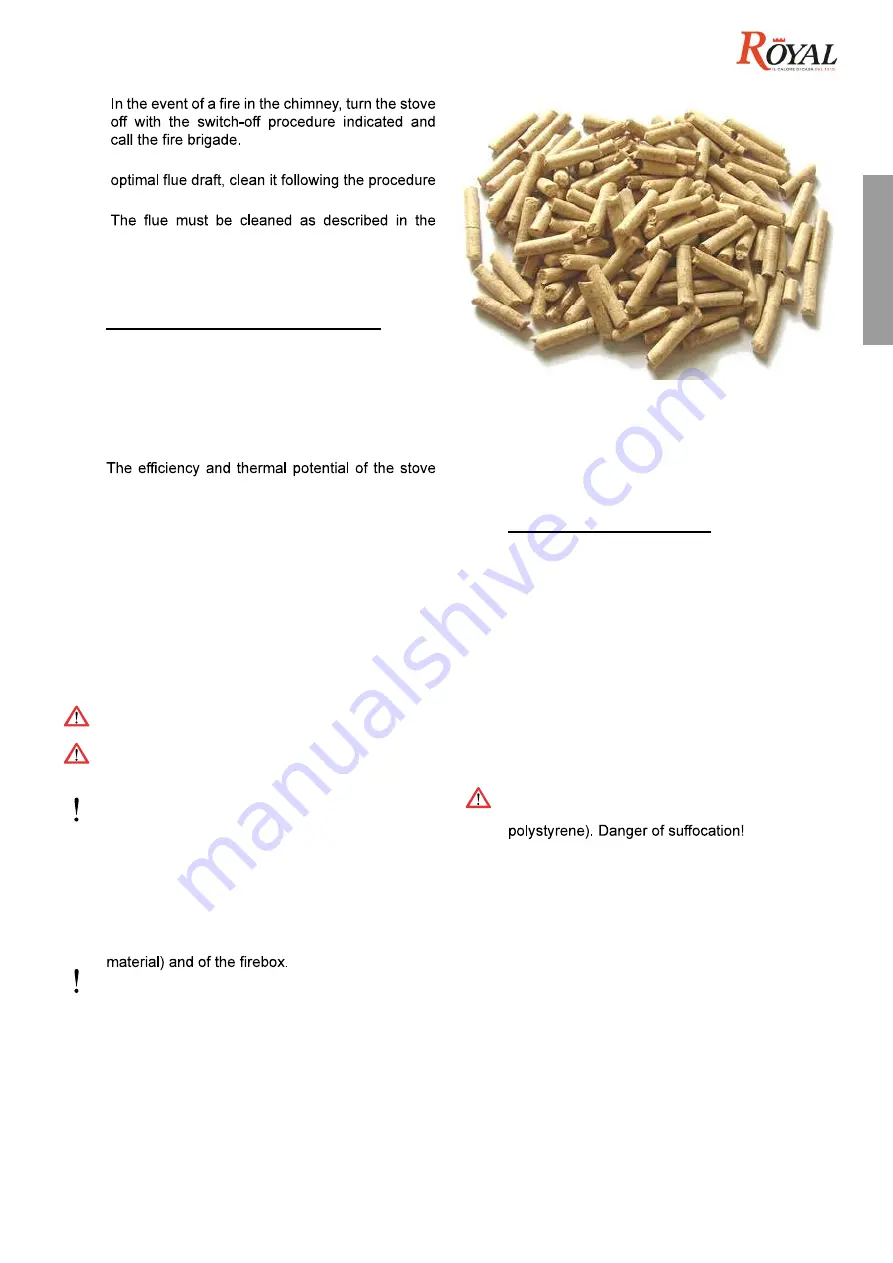
31
004778400 - 24/07/2020
E
N
G
L
IS
H
•
• In the event of stove malfunction due to non-
described.
•
paragraph 6.
• Do not touch the painted parts during operation to
avoid damage to the paintwork.
3
FUEL CHARACTERISTICS
3.1 FUEL CHARACTERISTICS
The pellet (Fig. 3.1) is a compound consisting of
various types of wood pressed with a mechanical
procedure in compliance with the standards which
safeguard the environment and is the only fuel that
can be used for this type of stove.
may vary depending on the type and quality of the
pellets used.
We recommend the use of class A1 pellets
(ISO 17225-2, ENplus A1, DIN Plus or NC 444
category “High Performance NF Pellets Biofuels
Quality”).
The stove has a pellet storage tank with the capacity
indicated in the table of data characteristics in
paragraph 14.
The loading compartment is positioned in the upper
part. It must always be openable in order to load
the pellets and must remain closed during stove
operation.
For reasons of operating temperature control,
traditional wood operation is not possible.
It is forbidden to use the stove as a waste incinerator.
3.2 PELLET STORAGE
The pellet must be preserved a suitable distance
from the stove in a dry place that is not too cold.
We recommend preserving several bags of pellets
in the room in which the stove is used or in an
adjacent room provided that the temperature and
humidity are acceptable.
Wet and/or cold pellets (5°C) reduce the thermal
potential of the fuel resulting in the need for more
cleaning maintenance of the burn pot (unburned
Pay particular attention to the storage and handling
of pellet bags. Their crushing and the formation of
sawdust must be avoided.
If sawdust is introduced into the stove’s tank, this
could cause the pellet loading system to become
blocked.
The use of poor-quality pellets can compromise the
normal operation of the pellet stove and result in
forfeiture of the warranty.
4
HANDLING AND
TRANSPORTATION
The stove is delivered complete with all the parts
provided.
Pay attention to the tendency to unbalance the
stove.
The centre of gravity of the stove is moved towards
the front.
Bear in mind the above also when moving the stove
on the transportation support.
During lifting, avoid jerking or abrupt movements.
Make sure the forklift truck has a capacity greater
than the weight of the stove to be lifted.
The full responsibility of the lifting of loads lies on
the person handling the lifting equipment.
Make sure that children do not play with the
components of the packaging (e.g. films and
4.1 REMOVAL FROM THE SHIPPING
PALLET
Follow the instructions given in paragraph 14 when
removing the stove from the shipping pallet.
Fig. 3.1
Содержание Alida Air 120
Страница 26: ......
Страница 50: ......
Страница 74: ......
Страница 98: ......
Страница 127: ...127 ESPAÑOL 004778400 24 07 2020 Fig 1 Fig 2 Fig 3 Fig 4 Fig 6 Fig 5 ...
Страница 129: ...129 ESPAÑOL 004778400 24 07 2020 Fig 1 Fig 2 Fig 3 Fig 4 Fig 6 Fig 5 ...
















































